The expedition described here happened one year ago, but in these times with low activity in the club it can be a nice thing to look back on smaller projects or trips which we did not write about back when they happened.
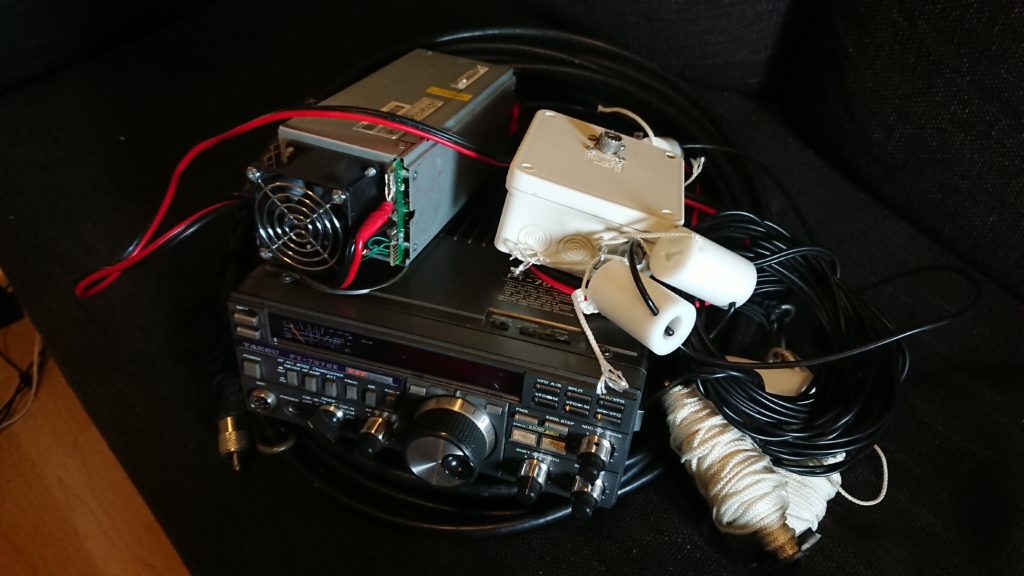
In 2019, I decided to bring a HF radio along for my easter vacation. This in itself was not that special, but what made it extra exciting is that my family lives in an island-community far west in the country, outermost in one of the big fjords. This meant that there was a possibility for a IOTA activation, which was an encouraging motivator for running as much radio as possible. The equipment brought along was a 100W HF radio, a 20m dipole with a common-mode choke, some lengths of coax, and a lightly modified PSU from an old server.
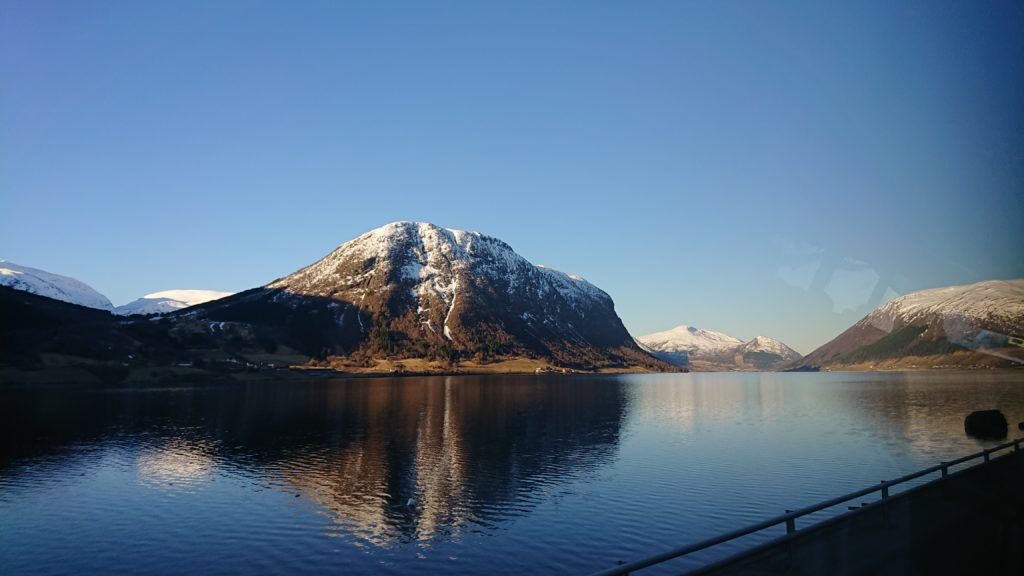
Getting around in Norway can be a bit of an experience. The big cities got airlines between each other, but if you have lots of luggage and want a cheaper option there’s the choice between train and buss. Unfortunately no direct trains go from Trondheim to the west coast, so in this case the bus was the only realistic choice. It may sound a bit strange to people not used to Norwegian fjord-roads, but the duration of the trip from Trondheim to Bergen is a whole 14 hours with the bus. Still, there’s nice scenery on the way and most importantly it’s cheap and there’s no weight limits for your luggage. After getting to Bergen you have to take a half-hour drive to the ferry, and the trip to the islands on the ferry takes another half-hour.
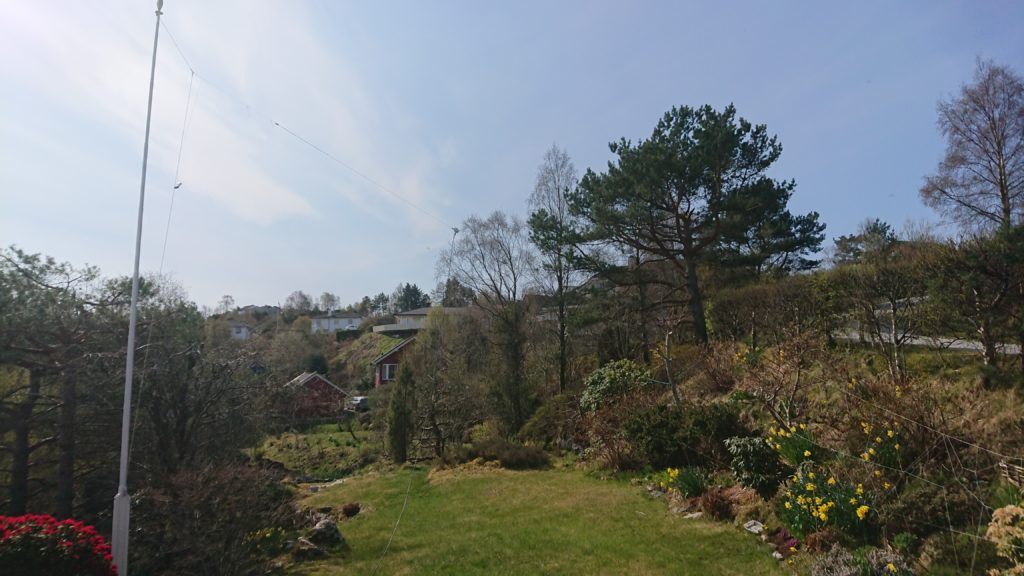
The antenna was rigged as soon as possible after arriving. The best place turned out to be over the lawn, between the flagpole and a nearby tree in a hillside. This gave decent directivity towards mainland Europe. However, the rigging was done during sunset, and the 20m band was quickly fading. An attempt was made to work some contacts right away, but it was a little bit late.
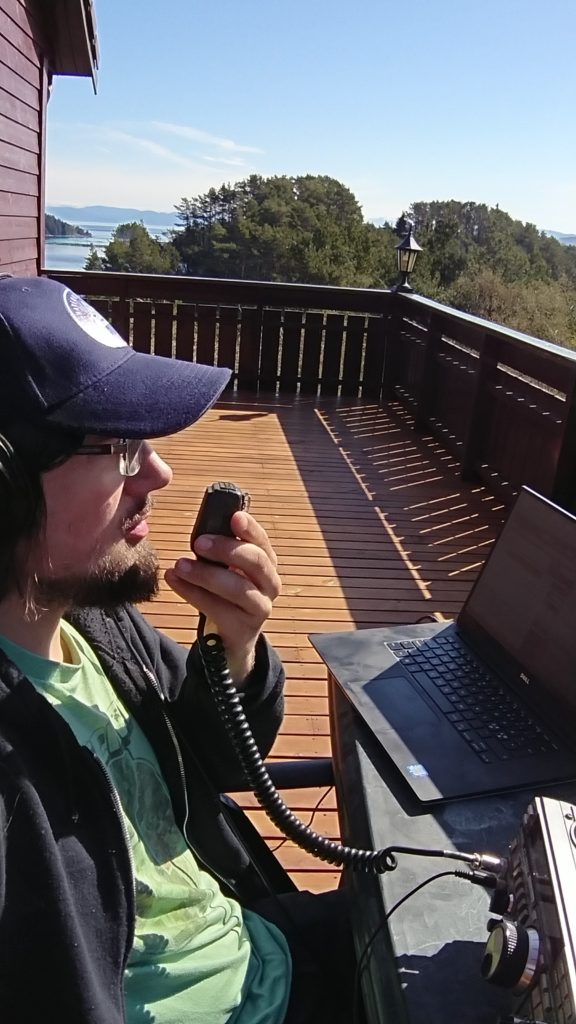
During the next few days, the weather was very nice. The station was moved outside onto the deck, to spare the rest of the family from too much radio-chatter. Most of the days were used for calling CQ, and while not the best rate in the world, it would usually clock in at about 100 QSOs a day. The total amount of QSOs during the expedition therefore ended at a nice 285. Mostly Europe, but a few DX here and there, usually in the afternoon local time. In particular a few IOTA-hunters from Japan were very eager to make the contact. There were also plenty of special calls on air, like the Spanish URE 70-year anniversary and the World Amateur Radio Day.
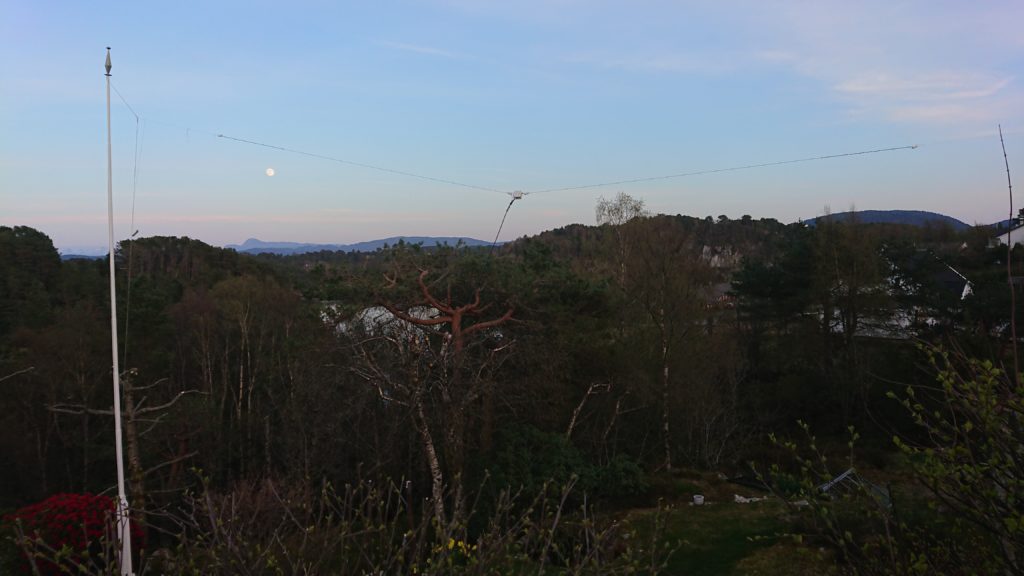
After the three days of radio, the antenna was rigged down on the fourth day. The weather had turned a bit more typical for the west-coast, with some rain in the air. A flag-day was coming up the day after as well, so rigging back up later was not an alternative.
A new solution for generating QSL card-lables was tested, in order to get the required layout for making the cards applicable for IOTA-points. As defined in the rules, the island-name and region has to be machine-printed on the card together with the QSO information, and our internal script for printing QSL-lables in the club was not yet ajusted for this. The solution was to use a program called “ADIF2QSL” by SP7DQR. This solution works in conjunction with Microsoft Office, but it also allows for a great deal of flexibility and quick change of label layout.
All in all, the expedition was a success. Nice weather, a fine view and a slow but steady rate.
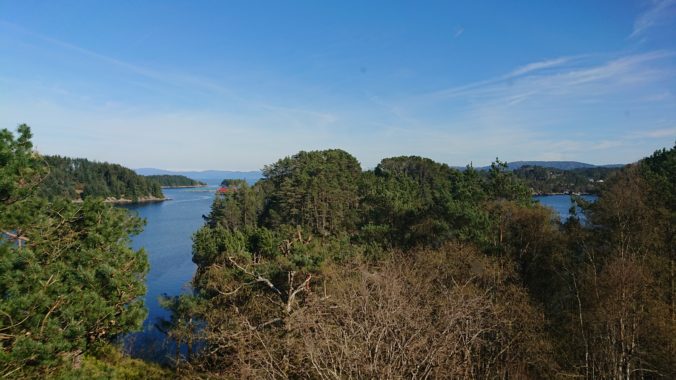

Leave a Reply